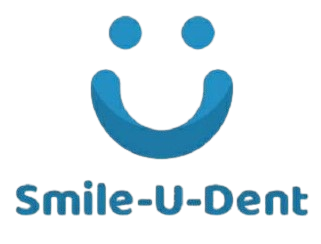

Why are Space Maintainers Necessary?
When a primary (baby) tooth is lost prematurely, the surrounding teeth tend to drift into the empty space. This can lead to:
Crowding: Permanent teeth may not have enough room to erupt properly, leading to crooked or overlapping teeth.
Misalignment: The jaw may shift, affecting the bite and potentially causing problems with chewing, speaking, and facial appearance.
Bite problems: Misaligned teeth can lead to issues like overbites, underbites, and crossbites.
Types of Space Maintainers
Fixed Space Maintainers: These are cemented to the teeth and cannot be removed by the child. They are generally more effective at maintaining space but require regular dental checkups for adjustments and maintenance.
Band and Loop: A metal band is cemented around a tooth, and a wire loop extends from the band to maintain space.
Band and Loop Space Maintainer
Lingual Arch: A metal wire is placed behind the lower teeth to prevent forward movement of the front teeth.
Lingual Arch Space Maintainer
Transpalatal Arch: A metal wire is placed across the roof of the mouth to prevent the upper molars from moving forward.
Transpalatal Arch Space Maintainer
Removable Space Maintainers: These can be taken out by the child or parent for cleaning and eating. They are generally less effective than fixed maintainers but may be more comfortable for some children.
Removable Space Maintainer
When are Space Maintainers Used?
Premature Loss of Primary Teeth: If a primary tooth is lost before the permanent tooth is ready to erupt, a space maintainer may be recommended.
Risk of Tooth Movement: Even if a permanent tooth is about to erupt, a space maintainer may be used to prevent shifting of adjacent teeth.
Preventing Future Orthodontic Problems: Early intervention with space maintainers can help avoid more complex and expensive orthodontic treatment later in life.
Benefits of Space Maintainers
Prevent Tooth Movement: Maintain space for the proper eruption of permanent teeth.
Reduce Risk of Crowding and Misalignment: Help ensure straight teeth and a healthy bite.
Improve Oral Health: Proper alignment can make it easier to clean teeth, reducing the risk of cavities and gum disease.
Boost Self-Esteem: Straight teeth can contribute to a positive self-image.
Important Considerations
Regular Dental Checkups: Regular visits to the dentist are essential for monitoring the effectiveness of space maintainers and making necessary adjustments.
Oral Hygiene: Maintaining good oral hygiene, including brushing and flossing regularly, is crucial for preventing cavities and gum disease, especially when wearing appliances.
Diet: Avoid sticky or hard foods that can damage space maintainers.
What is Appliance Therapy?
Appliance therapy involves the use of various dental devices to correct misaligned teeth and jaws. These appliances can address a wide range of orthodontic problems, including:
Crowding: Too many teeth for the available space.
Spacing: Gaps between teeth.
Overbite: Upper teeth significantly overlap lower teeth.
Underbite: Lower teeth protrude beyond upper teeth.
Crossbite: Upper teeth bite inside lower teeth.
Common Types of Appliances
Braces: The most common type of orthodontic appliance, using brackets and wires to gradually move teeth into proper alignment.
Braces
Retainers: Worn after braces are removed to maintain the achieved alignment and prevent relapse.
Retainers
Headgear: Used in conjunction with braces to help control jaw growth and tooth movement.
Headgear
Expander: Used to widen the upper jaw to create more space for the teeth.
Expander
When is Appliance Therapy Used?
Significant Orthodontic Issues: Appliances are typically used when there are significant misalignment problems that cannot be corrected with simple measures like brushing and flossing.
Any Age: While often used during childhood and adolescence, appliance therapy can be beneficial at any age.
Benefits of Appliance Therapy
Improved Oral Health: Straight teeth are easier to clean, reducing the risk of cavities and gum disease.
Enhanced Appearance: Straight teeth can boost self-esteem and confidence.
Improved Bite Function: Proper alignment can improve chewing, speaking, and facial appearance.
Prevention of Future Dental Problems: Correcting misalignment early can prevent more serious issues later in life.
Important Considerations
Regular Dental Checkups: Regular visits to the orthodontist are essential for monitoring progress and making adjustments to the appliances.
Oral Hygiene: Maintaining good oral hygiene is crucial for preventing cavities and gum disease while wearing appliances.
